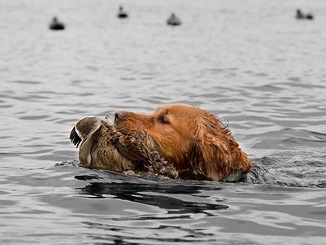
Wild rice harvesters are encountering an average rice crop this year in Minnesota. What started as a potential record production year was drenched by as much as 20 inches of rain in July. In core rice areas around Brainerd, Aitkin and Little Falls, the rainfall in July equaled a year’s worth of precipitation. The torrential rains reduced rice production there by about 25 percent.
According to Rod Ustipak, Ducks Unlimited’s wild rice lake management coordinator, other areas of the rice range did better. The Fergus Falls, Park Rapids, Bemidji and Iron Range areas were generally spared the large-scale losses that the Brainerd and Aitkin areas received.
“Wild rice lakes west of Walker were spared and feature some excellent wild rice crops in the Bemidji and Detroit Lakes areas of Northwestern Minnesota,” said Jon Schneider, Ducks Unlimited manager of conservation for DU’s Living Lakes Initiative in Minnesota.
Ducks Unlimited helps ensure healthy stands of wild rice for ducks and humans through a partnership with Minnesota Department of Natural Resources. Under contract with Ducks Unlimited and with the support of Minnesota DNR Section of Wildlife field staff, Ustipak and his assistants manage outlets of more than 100 wild rice lakes involving nearly 30,000 acres throughout central and northern Minnesota to keep them free-flowing.
